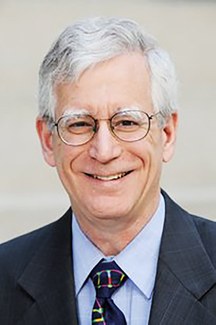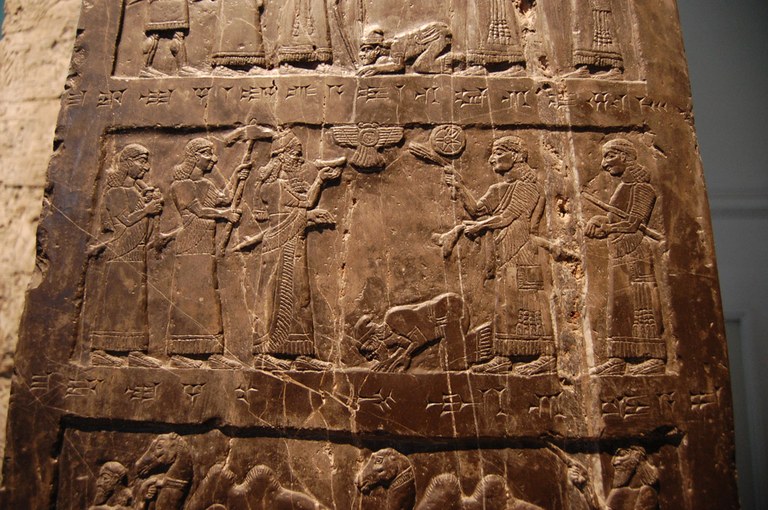Assyria and the Hebrew Bible: A Reassessment
This article, about the 13th Annual Leon Levy Lecture by Peter Machinist, first appeared in ISAW Newsletter 25 (Fall 2019).
 Assyria, in its last or Neo-Assyrian phase of the first millennium BC, was the first universal empire in the ancient Near East. It was an imposing, indeed terrifying colossus to the many states and peoples that fell under its sway, two of which were ancient Israel and Judah. The Neo-Assyrian empire was a highly complicated and sophisticated entity, in which ruling elites and subjects interacted not simply in the military, political, and economic arenas, but, intertwined with them, in the cultural, especially the ideological, arena as well. In short, Assyria was more than a colossus of brute force; it imposed itself on its subjects as a powerful ideological system. The analysis of this system and its relationship to the other arenas of the empire has formed an important part of contemporary study of Neo-Assyria. In this study, scholars have drawn on the evidence, both written and non-written, of the Assyrian ruling elites themselves, but also of their various subject states and peoples. From the latter, easily the most important evidence, because of its extent, variety, and depth of engagement with Assyria, has been the principal monument of ancient Israel and Judah, namely, the Hebrew Bible.
Assyria, in its last or Neo-Assyrian phase of the first millennium BC, was the first universal empire in the ancient Near East. It was an imposing, indeed terrifying colossus to the many states and peoples that fell under its sway, two of which were ancient Israel and Judah. The Neo-Assyrian empire was a highly complicated and sophisticated entity, in which ruling elites and subjects interacted not simply in the military, political, and economic arenas, but, intertwined with them, in the cultural, especially the ideological, arena as well. In short, Assyria was more than a colossus of brute force; it imposed itself on its subjects as a powerful ideological system. The analysis of this system and its relationship to the other arenas of the empire has formed an important part of contemporary study of Neo-Assyria. In this study, scholars have drawn on the evidence, both written and non-written, of the Assyrian ruling elites themselves, but also of their various subject states and peoples. From the latter, easily the most important evidence, because of its extent, variety, and depth of engagement with Assyria, has been the principal monument of ancient Israel and Judah, namely, the Hebrew Bible.
 Depiction of Jehu King of Israel giving tribute to King Shalmaneser III of Assyria, on the Black Obelisk of Shalmaneser III from Nimrud (circa 827 BC) in the British Museum (London).
Scholars, not surprisingly, have not agreed on how to interpret the biblical evidence on Assyria: how much the Bible actually knows of Assyrian imperial ideology and practice; where did it get this knowledge; what does it do with it? In the present lecture we will review these issues, as we seek to evaluate the impact of the Assyrian empire on Israel/Judah and its biblical legacy, and the place of ideology and propaganda in political governance both in ancient Assyria and more generally.
Depiction of Jehu King of Israel giving tribute to King Shalmaneser III of Assyria, on the Black Obelisk of Shalmaneser III from Nimrud (circa 827 BC) in the British Museum (London).
Scholars, not surprisingly, have not agreed on how to interpret the biblical evidence on Assyria: how much the Bible actually knows of Assyrian imperial ideology and practice; where did it get this knowledge; what does it do with it? In the present lecture we will review these issues, as we seek to evaluate the impact of the Assyrian empire on Israel/Judah and its biblical legacy, and the place of ideology and propaganda in political governance both in ancient Assyria and more generally.
Peter Machinist is the Hancock Research Professor of Hebrew and Other Oriental Languages at Harvard University, who served since 1991 both in the Dept. of Near Eastern Languages and Civilizations and in the Harvard Divinity School; he retired from full-time teaching in January, 2017. Earlier, he taught at Case Western Reserve University, the University of Arizona, and the University of Michigan; he also was visiting lecturer (1981) and then Lady Davis Visiting Professor in Jewish History (2003) at the Hebrew University of Jerusalem, Visiting Professor at the University of Munich (2013-14) and at the Pontifical Biblical Institute of Rome (2018). He was a Fellow of the Wissenschaftskolleg zu Berlin (1984-85) and the Oxford Centre for Hebrew and Jewish Studies (2008-09). The University of Zurich awarded him an honorary doctorate in 2009, and he received a volume of studies in his honor in 2013. His work lies in the intellectual and cultural history of the ancient Near East, with particular attention to Israel and the Hebrew Bible, and Mesopotamia. Among his publications are: Letters from Priests to the Kings Esarhaddon and Assurbanipal (co-edited with Steven Cole); and more than seventy articles and reviews including “How Gods Die, Biblically and Otherwise. A Problem of Cosmic Restructuring.”